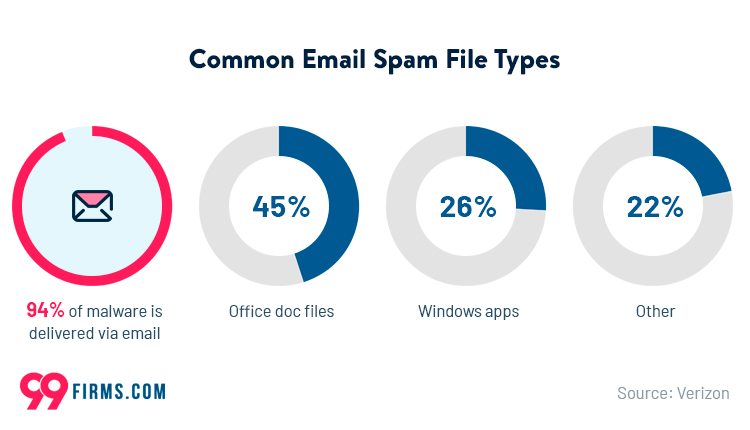A spam trap is not just when you get your hand caught in a tin of processed, canned meat. I mean, it is an equally unpleasant situation, but one is a little more present in marketing than the other. And no, it's not the one you might think.

What is meant by spam trap?
A spam trap is an email address used by Internet Service Providers, or ISPs, to identify senders who aren't playing the best-practise-email game.
Basically, it's what it says on the tin - a spam trap is used to identify and monitor spam email.
It's also a type of honeypot, using fake email addresses to bait scammers. Overall, this reduces the amount of spam traffic on ISP networks.
These spam trap emails may have been legit at one point, but are now abandoned or invalid. So, if someone gets a new job, their work email would become invalid. This means that any contact which hasn't opened an email in a year may have the potential to become a spam trap.
A spam trap also uses filters to block certain emails that have a history of sending spam. It'll do this by analysing all or part of an email address to identify it, and can then decide whether or not to mark it as a spam-sending address.
The thing is spam traps can unintentionally block legitimate emails too, damaging a sender's reputation and email deliverability. This can even lead to the sender's domain list or IP address being denied.
How do you identify a spam trap?
This is something that's easy to do - if you're a human being.
A spam trap has features that a normal user would notice, and would cause them to cease sending emails to the address. This could include:
- Typos in the domain
- An address being acquired through illegitimate means, like bulk list purchasing, or scraping
- The address is outdated, or no longer valid - see the new job example above.
So, to check if a spam trap is included in an email list, you should check email delivery rates.
If these are dropping drastically, the list may contain a spam trap. This is because spam traps don't respond to, or even open, emails sent to them. Emails are sent, but won't be registered as delivered.
It doesn't help that if the address doesn't respond or react to an email, that can damage your reputation. So, it's an imperative that you analyse your contact list, either manually or with tools.
A way to do this is to access an email blocklist. Blocklist tool vendors maintain and add to their blocklists, adding IP addresses and similar which have been reported by its user list. Senders who suspect they've been added to the list can check it, but warning: it's very difficult to get an address removed once it's on.
What happens when you hit a spam trap?
The consequences of this can vary. It can depend on things like the type of trap you hit, how many times you hit it, and how the operator handles things. But some examples can include:
- A damaged sender reputation. This can cause bounce rates to increase, and deliverability to decrease.
- Your IP address being added to a blacklist database.
- Your sending domain Being permanently blacklisted
- Hitting a spam trap operated by an anti-spam organisation. This will impact the delivery of your emails to all ISP, and the companies who consult their databases. Basically, every email you send from that point on will be affected because they use this information to filter incoming emails.
What is a pristine trap?
So, there's a few different types of spam traps we need to go through. Know your enemy and all that.
Pristine spam traps, also called true traps or honeypots, are email addresses created to capture spammers. These are email addresses which were never used as legitimate addresses, don't subscribe to email programmes, and do not make purchases.
Many spam trap operators post these types of spam traps on various websites across the internet. They are usually hidden in the background code of webpages, and are acquired by spambots scraping email addresses. So, hitting these types of spam traps usually indicates you've got a bad data partner.
Other types of traps include:
- Recycled spam traps. These were once email addresses that were used and valid, but have since been repurposed by their provider. Someone may have used this address to opt in at one point, but have since abandoned it. You might have these spam traps on your list if it's more than one year old, you don't email your list frequently, or there are mistyped/invalid addresses on your list.
- Typo spam traps. These are spam traps that aim to look legitimate, just like recycled traps. This type of trap uses subtle typos, for example:
- @gmil, not @gmail
- @htmail not @hotmail
Like recycled traps, typo spam traps won't damage a sender's reputation as severely as pristine traps but will signal to the antispam authorities over time.
How do I stop spam email traps?
There's a few ways spam traps can end up on your list, but all are caused by poor email list management, hygiene, and upkeep. Spam traps can often be avoided and prevented by maintaining a clean, healthy contact list and following best practises.
Although I'm sure that's easier said than done. So, let's have a look into some examples. To have the best chance of avoiding spam traps, you need to:
- Avoid purchased lists. This included any contacts who have not opted-in to receive your company's various newsletters, emails, or other communications. Using a purchased list ups the likelihood you'll run into a trap, and that's before considering that the subscribers on these lists have no connection to your brand, and might even delete it (at best) or mark it as spam (at worst). These are all things that will damage your sender reputation.
- List contamination. List contamination happens when a spam trap disguised as an email address is added to an unconfirmed list, be it deliberately or unintentionally. To avoid this, check the correct spelling of the email addresses on your list, and use email validation in your signup forms to check the legitimacy of an email address, and prevent typos. Try out double opt-in, too, before you start sending out all your content.
- Remove outdated emails. Keep your list up to date with which subscribers are regularly engaging with your content. Spam traps are sometimes sourced from outdated emails that are no longer valid. So, going for long periods of time without sending mail to an address can lead to being caught in a spam trap. This is something that can also happen when sending emails to an address which has not opened your content in months.
What is email list hygiene?
In order to prevent spam traps, you need to regularly clean your list.
One out of every five emails never makes it to the recipient's inbox. It might be blocked by the service provider, or go into the junk folder.
Bad deliverability leads to a bad reputation. And that just leads to even worse deliverability. It's a vicious cycle.
With a huge, unwieldy email list, you might find yourself in a difficult position. Though you might think: "Look at me, I've got all these subscribers, chomping at the bit to read my email, clicking refresh on their inbox to devour it the second it comes through", but this might only be the case for a percentage of your list.




